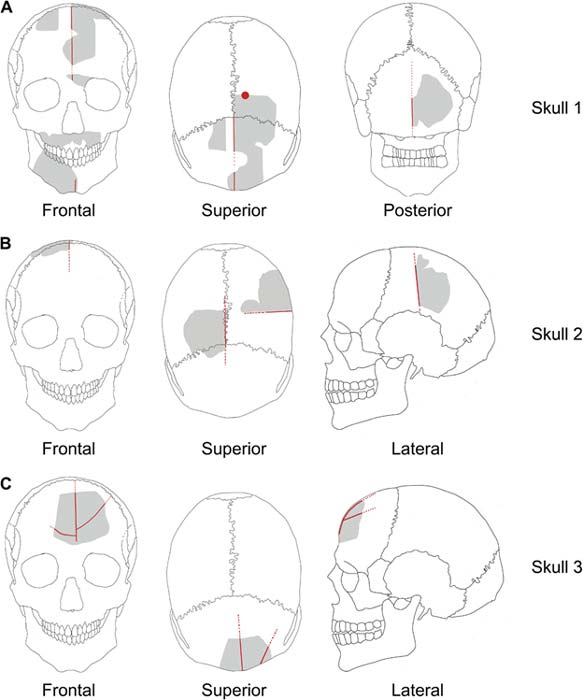
Evidence of the Earliest ‘Skull Cult’ Activity: Drilled and Carved Skulls Found at the World’s Oldest Temple
Just as people at the world’s oldest known temple site in Southeast Turkey began to make the transition from hunter-gatherers to a more settled lifestyle, they also started a “skull cult” in which they drilled and de-fleshed human skulls post-mortem. These activities, of around 11,000 years ago, are of the oldest known skull cult ever discovered in the world, and there have been several.
A Mysterious Ritual
Why the people of this ritual center at Göbekli Tepe in southeastern Anatolia did it is a mystery. It is also unknown whom they performed the rituals on, but it is believed they did so after the people had died, Newsweek reports. The Newsweek story is based on interviews and a scholarly article by the German Archaeological Institute in ScienceAdvances journal.

This is a pillar from what archaeologists call Building D at Gobekli Tepe. (German Archaeological Institute/Julie Gresky)
One theory is that they did it to enemy captives. Another is that they did it to their own folk whom they wanted to honor in death. Anthropologists have determined the people removed the flesh from the skulls and then made carvings just after the person had died. The experts determined the skull modifications were done after death because the bone into which the incisions had been made was still elastic, but there was no healing, which indicates the subjects were dead.
The three skulls were carved, and one drilled on the cranium or skullcap. The people doing the carvings made deep incisions along the sagittal axes. That is, the incisions ran vertically from the back of the skull to the forehead.

The skulls were in fragments. The red lines show incisions and modifications. (German Archaeological Institute)
One of the subjects of the incisions was a probably a female of 25 to 40 years old. But the condition of the skulls prevents researchers from ascertaining the genders of any of them. The date of the skulls had to be estimated from the archaeological context because there was not enough collagen in them to date them directly.
The cuts were made with manmade tools and not by animals gnawing, the evidence shows, leading to further speculation that the modifications were ritual in nature. One also showed some red ochre, which is known to have been used in rituals during the Neolithic.
Julie Gresky of the German Archaeological Institute told Newsweek:
“This site, it’s not a pure settlement, it’s much more. It’s really a ritual site…Lots of evidence from archaeology points to that. And that fits perfectly to our findings. We have first evidence of people doing rituals. So they made this cult at this time after they built the structures.
“The ochre was stuck to the skull and the skull was found next to where ochre was spread. Ochre in the Neolithic has ritual significance—mainly it’s used in burials to cover the dead and is connected to some rituals. This underlines the special meaning of that skull.”

One of the carved pillars at Göbekli Tepe (CC BY-SA 3.0)
This practice of cutting and drilling skulls was common and widespread in the Neolithic and thereafter, but these skulls are the earliest known cases of it. The Neolithic lasted from about 12,000 years to 4,000 years before the present era.
The World’s Most Ancient Temple
Göbekli Tepe was discovered in the 1960s and is a vitally important archaeological site. It has huge stone slabs somewhat like Stonehenge in England but the deliberate arrangement of these stone slabs is far older, indeed, twice as old. It was also built seven millennia before the Great Pyramid at Giza.

Several stone circles ‘temples’ found at the southern excavation site at Gobekli Tepe (CC BY-SA 3.0)
The standing stones are accurately carved into ‘T’ shapes and some have strange and interesting relief carvings, a feature also lacking at the famous henge in the UK. This indicates that the masons at the much more ancient site at Gobekli Tepe had more advanced techniques. Also, a lot of people came together to create this construction, at a period when most people lived in small, nomadic units.
Archaeologists believe the site was a ritual or religious center rather than a settlement. Some consider it the first temple in the world.
Top image: Images A, C and D show incisions while B shows the hole drilled into the skull. (German Archaeological Institute/Julie Gresky)
By Mark Miller















